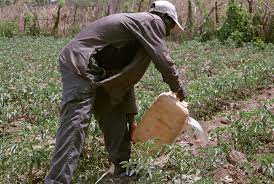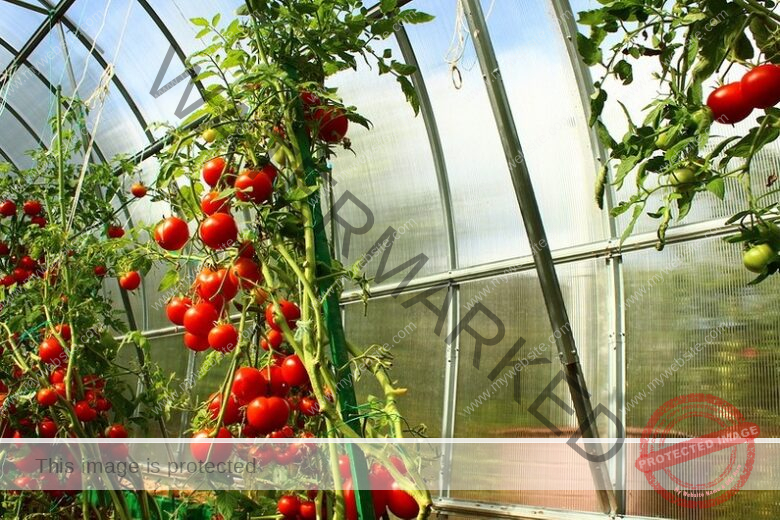Installing a manual irrigation system in a farm is a great way to ensure that your crops and plants receive the optimal water levels for the best possible growth.
By following a few simple steps, you can easily install a manual irrigation system that will help you save time and money.
In this article, we will provide you with detailed information on how to install a manual irrigation system on a farm and other vital tips that will be beneficial to you.
How To Install Manual Irrigation System In A Farm
Manual irrigation systems are an affordable and effective way to water crops on a farm. This type of irrigation system involves using a bucket, hose, and a watering can to manually deliver water to crops on the farm.
Read Also: [Installation Guide] Best Sprinkler Irrigation System
The farmer must measure the amount of water being used, and the water must be delivered to the crops at the right time and in the right amount.
Manual irrigation systems are typically used on small-scale farms, as they are not as efficient as automated systems.
Installing a manual irrigation system in a farm can be a great way to ensure that your plants receive the water they need to grow and thrive. Here are some steps to install a manual irrigation system in a farm:
Read Also: [Installation Guide] Water Irrigation System For Greenhouse
Step 1. Choose The Appropriate Irrigation System
Depending on the size and shape of your farm, you need to decide which type of irrigation system is best for your needs. Manual systems are typically cheaper and easier to install than automated systems, so they are a good choice for smaller farms.
Step 2. Calculate The Water Pressure And Flow Rate
You need to calculate the water pressure and flow rate in order to determine the size of the pump and the size of the hoses that you need. You can use a flow chart to help with this calculation.
Step 3. Purchase The Necessary Components
Once you have decided on a manual system, you will need to purchase the necessary components. These components typically include a water pump, hoses, sprinklers, and filters.
Step 4. Plan The Layout For The Irrigation System
Determine the size of the area that needs to be irrigated and decide on the type of irrigation system that will work best for the farm.
Read Also: [Installation Guide] Sprinkler Irrigation System In Zambia
Step 5. Gather Necessary Equipment
Gather the necessary materials for the installation. This includes pipe, fittings, valves, and any other components needed to complete the system.
Step 6. Dig Trenches
Dig trenches for the pipes to be laid in. The trenches should be deep enough to cover the pipe and make sure they are not disturbed during the installation process.
Step 7. Lay the Pipes
Lay the pipes in the trenches and secure them in place with the fittings. Make sure that the pipes are level and secure to ensure that there is no water leakage.
Step 8. Install the valves and control systems
Install the valves and control systems for the irrigation system. Connect the valves to the pipes and control systems so that the water flow can be adjusted as needed.
Read Also: What Is Farrow Irrigation? [All You Need To Know]
Step 9. Connect the System to the Water Source
Connect the irrigation system to the main water supply. Ensure that the connection is secure and that the water pressure is adequate for the system to run properly.
Step 10. Install The Pump
The pump needs to be connected to a water source such as a well or a lake. Make sure the pump is securely installed before moving on to the next step.
Step 11. Install The Hoses And Sprinklers
The hoses and sprinklers need to be connected to the pump and laid out in the farm in such a way that they will be able to reach all areas of the farm.
Read Also: [Installation Guide] Sprinkler Irrigation System In South Africa
Step 12. Start The System
Once the system is installed, you can start it up and test it to make sure it is working properly.
Step 13. Monitor the System Regularly
Monitor the system periodically to ensure that it is functioning properly. Make any adjustments as needed to keep the system running smoothly.
Selecting the Appropriate Irrigation System
It is important to select the right irrigation system so that you can get the best result. Here are a few tips to select the appropriate irrigation system for your farm.
1. Determine The Type Of Soil In The Area To Be Irrigated
Different soils have different irrigation needs, such as sandy soils that require more frequent irrigation than clay soils.
2. Consider The Type Of Plants That Will Be Irrigated
Different plants have different water needs, and the irrigation system should be tailored to meet those needs.
Read Also: 6 Best Irrigation Techniques for Plant Cultivation in South Africa PDF
3. Evaluate The Site And The Climate
Factors such as wind, temperature, and the amount of sunlight the area receives will affect how often the irrigation system needs to be used.
4. Consider The Available Water Source
Different types of irrigation systems require different water sources, such as wells or municipal water sources.
5. Consider The Size Of The Area To Be Irrigated
Larger areas may require more complex irrigation systems that can cover the entire area.
6. Calculate The Water Budget
Determine how much water is needed and when it is needed in order to correctly set up the irrigation system.
7. Consider The Cost Of Installation And Maintenance
Different types of irrigation systems have different installation and maintenance costs.
8. Evaluate The Available Technology
Different types of irrigation systems may have different levels of technology, such as automatic timers or rain sensors.
Maintaining Manual Irrigation System
It is important to learn the tips for maintaining a manual irrigation system. Here are some crucial recommendations.
1. Check The Water Pressure
Make sure your water pressure is sufficient to run your irrigation system. Use a pressure gauge to measure the pressure coming into the system.
2. Check For Leaks
Inspect all connections for leaks and repair any that you find.
3. Check For Blockages
Look for blockages in the system, such as clogged nozzles or broken lines.
4. Inspect The Sprinkler Heads
Make sure that the sprinkler heads are properly aligned and adjusted for the best coverage.
5. Check The Timer
Make sure that the timer is set correctly and that it is running on the desired schedule.
6. Test The System
Run a test of your system to make sure that it is working properly.
7. Check The Valves
Make sure that the valves are functioning properly and that the right amount of water is being delivered to the right areas.
8. Inspect The Lines
Make sure that the lines are not damaged or clogged.
9. Clean The Filters
Clean or replace the filters in the system to ensure that water is flowing correctly.
10. Check The Soil
If you have poor soil quality, you may need to adjust the amount of water being delivered or the type of fertilizer being used.
Crops Suitable for Manual Irrigation System
Manual irrigation is a simple and cost-effective way to irrigate crops, particularly in small-scale farming operations. It involves the manual application of water to crops using containers, hoses, sprinklers, or other tools.
The type of crop suitable for manual irrigation depends on the specific water requirements of the crop and the availability of water in the area.
Crops with low water requirements such as cereals, legumes, and vegetables, are generally well suited to manual irrigation. These crops generally require an even distribution of water throughout the growing season and can be easily managed with manual irrigation.
Crops that require frequent and precise water application such as fruit trees and turf grasses are more challenging to irrigate manually.
These crops require precise amounts of water at specific times and can be difficult to manage with manual irrigation.
In some cases, these crops may require additional irrigation systems such as drip irrigation or sprinkler systems.
Some of the common crops suitable for manual irrigation include Rice, Wheat, Maize, Sugarcane, Millet, Barley, Sorghum, Cotton, Groundnut, Mustard, Sunflower, and Soybean.
Challenges of Manual Irrigation System
Manual irrigation system has its challenges, some of which are highlighted here.
1. Cost
Installing a manual irrigation system can be quite expensive, depending on the size of the system and the number of components required. It can also require additional labor costs for installation, as well as ongoing maintenance.
2. Time
Installing a manual irrigation system can be quite time consuming, from digging trenches and laying the pipes, to connecting hoses and sprinklers, and programming the controller. This can be a large investment of time, especially for larger systems.
3. Maintenance
Manual irrigation systems require regular maintenance to ensure they are functioning correctly and efficiently. This includes checking for leaks, repairing or replacing faulty parts, and ensuring that the system is properly calibrated.
4. Water Usage
Manual irrigation systems can be inefficient, as they are not able to adjust the amount of water they apply based on the weather and soil conditions. This can lead to over- or under-watering, which can end up wasting water and money.
Advantages and Disadvantages of Manual Irrigation System
Installing a manual irrigation system has its advantages and disadvantages both of which are highlighted below.
Advantages
- Manual irrigation systems are much cheaper to install and maintain than automated systems.
- Manual systems require minimal energy to operate, reducing the need for electricity or other power sources.
- Manual irrigation systems are much simpler to install and use than automated systems, making them ideal for small-scale and backyard gardens.
Disadvantages
- Manual irrigation systems require more effort and time to operate, as they must be monitored carefully to ensure that the right amount of water is applied to the plants.
- Manual irrigation systems require frequent inspections and maintenance to prevent clogging or other issues.
- Manual irrigation systems are susceptible to human error and can lead to over or under-watering of plants.
Cost of Manual Irrigation System
The cost of manual irrigation systems varies depending on the type of system, the size of the area being irrigated, and the number of components used.
Manual irrigation systems typically require fewer components than automated systems and thus tend to be less expensive.
A basic manual system with a water source, a hose, and a spray head can cost as little as $50-$100. More complex systems with more components can cost upwards of $500-$1000.
Small Farm Irrigation Systems
Small farm irrigation systems are designed to deliver water to crops in an efficient and cost-effective way.
They typically include pumps, pipes, and sprinklers to deliver water to crops. These systems can also be used to help conserve water and reduce runoff.
Additionally, they can be used to control weeds and pests, improve soil conditions, and increase crop yields.
How To Install an Irrigation System
Step 1. Choose an appropriate irrigation system for your needs.
Step 2. Calculate the water pressure and flow rate needed for your system.
Step 3. Gather the necessary tools and supplies.
Step 4. Dig trenches for the pipes and lay them out.
Step 5. The pipes should be connected to the main water supply.
Step 6. Install the control valves, water meters, and backflow prevention devices.
Step 7. Connect the irrigation lines to the control valves.
Step 8. Install the sprinklers and other components.
Step 9. Set the timer and test the system.
Step 10. Fill in the trenches and landscape the area.
How To Install A Irrigation System For Lawn
Step 1. Determine the size of the irrigation system needed for the lawn.
Step 2. Determine the water source for the irrigation system.
Step 3. Dig trenches for the irrigation pipes and lay the pipes.
Step 4. Connect the pipes to the water source, and install the sprinklers.
Step 5. Set up a timer for the irrigation system to ensure proper watering.
Step 6. Test the system to make sure it is working properly.
Sprinkler Irrigation System
Sprinkler Irrigation System is a method of applying water to a landscape using a network of pipes and sprinklers. It is an efficient, versatile, and reliable way to water crops, lawns, and gardens.
It uses less water than other methods, and helps reduce water waste due to evaporation and run-off.
Irrigation System Installation Near Me
Irrigation system installation near you is a great way to keep your lawn and garden healthy and hydrated.
From installing sprinklers and drip lines to setting up water timers, professional irrigation system installation can help ensure that your plants and lawn are adequately watered.
Professional installation can also help reduce water waste and conserve natural resources.
How To Install A Irrigation Controller
Step 1: Determine the type of irrigation controller you need for your system.
Step 2: Install the controller in a dry, secure, and accessible location.
Step 3: Connect the controller to the water supply and securely fasten the connections.
Step 4: Connect the controller’s wiring to the sprinkler valves.
Step 5: Program the controller according to the manufacturer’s instructions.
Step 6: Connect the controller to a power source.
Step 7: Test your system to ensure that the controller is operating properly
How To Set Up A Farm Irrigation System
Here is a helpful tip to setup a farm irrigation system
1. Determine the water source
Identify the water source that will be used for the irrigation system.
2. Design the irrigation system
Design an irrigation system with the appropriate water pressure, valves, and pipes.
3. Install the irrigation system
Install the irrigation system as it is intended to be.
4. Test the irrigation system
Test the system to ensure proper operation.
5. Monitor the irrigation system
Monitor the system regularly to ensure it is functioning properly and efficiently.
Conclusion
Installing a manual irrigation system in a farm is a cost-effective way to make efficient use of water resources. It requires a small amount of upfront costs and minimal maintenance and can result in greater crop yields and healthier crops. Additionally, manual irrigation systems are reliable, easy to use, and can be adapted to a wide variety of crops and soil types.




